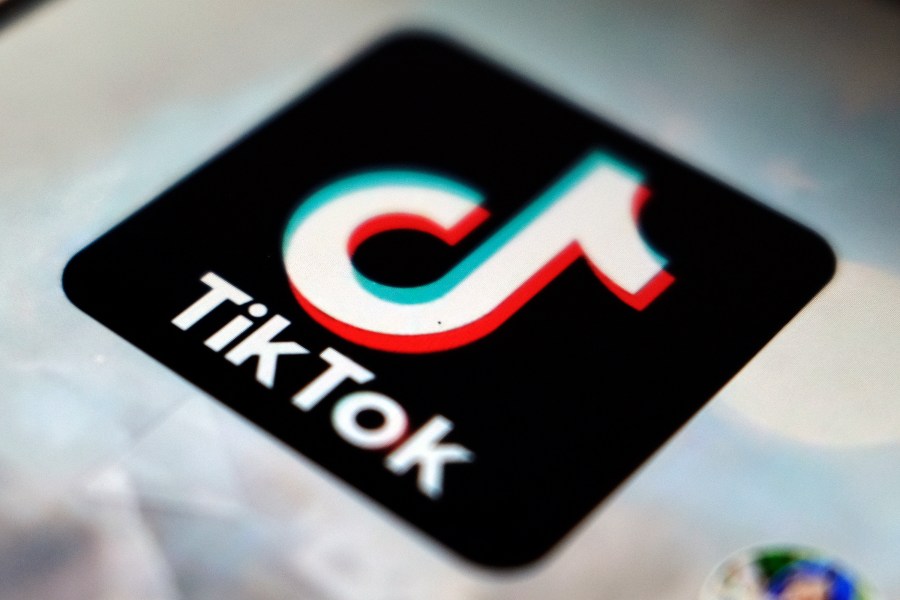Business
How the block on Montana’s TikTok ban could thwart other proposals on December 7, 2023 at 11:00 am Business News | The Hill

The defeat of Montana’s TikTok ban in federal court could deter other lawmakers from moving ahead with efforts to block the popular video sharing app facing bipartisan backlash.
There was mounting scrutiny over TikTok before Montana Gov. Greg Gianforte (R) signed the a law in May banning the app. House lawmakers grilled TikTok’s CEO in March as momentum and pressure built to ban the app. Dozens of states and the federal government followed up with narrower bans, restricting the TikTok from government-owned devices.
But a district judge’s ruling that Montana’s law violates users’ free speech could be a warning sign for state legislatures and Congress to avoid running into the same roadblock. Experts had already warned lawmakers that such bans would be difficult or nearly impossible to enforce.
Sarah Kreps, director of the Tech Policy Institute in the Cornell Brooks School of Public Policy, said the ruling feels like it may be a “final nail in the coffin” of proposals aimed at banning something as popular as TikTok.
“The judicial pushback against TikTok was always going to be an uphill battle, because of the constitutional questions about free speech, and Montana was a testbed for whether a ban could actually work,” Kreps said.
“What this shows is that courts take free speech very seriously,” she added.
When Montana became the first state to pass a law seeking to fully ban TikTok in May, it drew immediate pushback both from the company and civil rights groups that the law infringed on users’ free speech rights.
District Judge Donald Molloy agreed in his ruling last week, writing that “while there may be a public interest in protecting Montana consumers, the State has not shown how this TikTok bill does that.”
“Instead, [the bill] oversteps state power and infringes on the Constitutional rights of users and businesses,” he wrote.
Molloy blocked Montana’s TikTok ban, which was set to take effect in January, through a preliminary injunction.
“This ruling is very significant,” said Jenna Leventoff, senior policy counsel at the ACLU.
She said the ruling will make lawmakers looking to “directly or indirectly” ban TikTok, “think twice about the constitutionality of what they’re doing.”
Carl Szabo, vice president and general counsel at the tech industry group NetChoice, called it a “huge red light to every other state considering such action.”
“Not just because of it being bad policy, but because it is never going to take effect. And all it will do is force the state to waste taxpayer resources fighting legislation that lawmakers know to be unconstitutional,” he said.
TikTok is among the association members at NetChoice.
How does this impact other potential TikTok bans?
Lawmakers have proposed versions of bills that sought to ban TikTok since the start of the year based on concerns about ByteDance, its China-based parent company.
Congressional critics of TikTok argue that the app threatens national security by giving a Chinese company access to sensitive personal data from American users, which could then be shared with the Chinese government. TikTok has pushed back on such allegations.
House and Senate Republicans introduced bills that aimed to ban the use of TikTok broadly. Those efforts were met with criticism from Democrats, but a bipartisan proposal was introduced in March that seemingly faired a better chance at gaining broad coalition of support.
Sens. Mark Warner (D-Va.) and John Thune (R-S.D.) introduced the RESTRICT Act, which would give the Commerce Department the ability to identify and mitigate risks posed by technology linked to foreign adversaries, including China. The bill would ultimately give the administration the power to ban such apps, as well.
Warner spokesperson Rachel Cohen said the ruling “just demonstrates the need for a comprehensive, national solution to address foreign technology threats that won’t be struck down by the courts,” Cohen said in an email.
Leventoff, though, said the RESTRICT Act would likely face a similar fate in court if used to ban TikTok.
“If the Secretary of Commerce uses that extremely broad new authority to ban TikTok, a court would find that ban unconstitutional,” she said.
“That First Amendment analysis is going to happen, no matter what avenue the government uses to ban TikTok,” she added.
Szabo noted that when former President Trump tried to ban TikTok through an executive order in 2020 he “collided with the same limitation — the First Amendment.”
“What the judge made clear here is that just like it’s impossible to drive from New York City to London, it’s impossible to enact this type of ban on speech without violating the First Amendment,” Szabo said.
The state of Montana has not said whether it will attempt to appeal the decision to the federal Court of Appeals.
Emily Cantrell, a spokesperson for Montana Attorney General Austin Knudsen (R), said “this is a preliminary matter at this point” and the state is “weighing our options.”
“The judge indicated several times that the analysis could change as the case proceeds and the State has the opportunity to present a full factual record. We look forward to presenting the complete legal argument to defend the law that protects Montanans from the Chinese Communist Party obtaining and using their data,” Cantrell said in a statement.
A TikTok spokesperson said the company is “pleased the judge rejected this unconstitutional law and hundreds of thousands of Montanans can continue to express themselves, earn a living, and find community on TikTok.”
What about TikTok bans on government devices?
Although Montana is the only state to pass a full ban on TikTok, other states and the federal government have put in place more narrow bans on the app on government owned devices.
George Wang, staff attorney at the Knight First Amendment Institue at Columbia University, said that although the ruling is about Montana’s law, it could persuade other states considering their own bans, or even ones with narrower bans, to “drop those efforts.”
“While the ruling is specific to Montana, it’s still a serious thing that a federal court, the first federal court to consider these bans, has indicated that at least the categorical ban likely violates the First Amendment,” Wang said.
The Knight First Amendment Institute is challenging Texas’s TikTok ban on government devices on behalf of the Coalition for Independent Technology Research, citing how the ban applies to faculty in the state’s public universities.
“Whether the other states or Biden administration kind of take this in, remains to be seen, but it is a significant thing that the first federal court to address it has ruled the way it did,” Wang said.
The narrower bans, though, may fare better in court given the authority governments have.
“I think that that’s a separate question because governments can take measures more narrowly that they deem to be in the national security interest,” Kreps said.
Szabo likened the government device bans to limitations a private company has on what websites its employees can access.
“It is one thing for a business to tell its employees what they can and can’t do on the company devices. It’s a completely different thing for the government to come in and tell private citizens what they can and can’t do on their own devices,” he said.
Even if a government ban on TikTok were allowed to proceed, though, experts have pointed out technical difficulties of enforcing a ban based on loopholes that would allow users to gain access to the platform.
Kreps said that could also keep lawmakers from pushing forward bans.
“I think [it’s] worse than inaction to implement a policy that becomes farcical because no one will comply with it,” she said.
Technology, Business The defeat of Montana’s TikTok ban in federal court could deter other lawmakers from moving ahead with efforts to block the popular video sharing app facing bipartisan backlash. There was mounting scrutiny over TikTok before Montana Gov. Greg Gianforte (R) signed the a law in May banning the app. House lawmakers grilled TikTok’s CEO in March as…
Business
Why 9 Million Americans Have Left

The Growing American Exodus
Nearly 9 million Americans now live outside the United States—a number that rivals the population of several states and signals a profound shift in how people view the American dream. This mass migration isn’t confined to retirees or the wealthy. Thanks to remote work, digital nomad visas, and mounting pressures at home, young professionals, families, and business owners are increasingly joining the ranks of expats.

Rising Costs and Shrinking Wallets
Living in the US has become increasingly expensive. Weekly grocery bills topping $300 are not uncommon, and everyday items like coffee and beef have surged in price over the last year. Rent, utilities, and other essentials also continue to climb, leaving many Americans to cut meals or put off purchases just to make ends meet. In contrast, life in countries like Mexico or Costa Rica often costs just 50–60% of what it does in the US—without sacrificing comfort or quality.
Health Care Concerns Drive Migration
America’s health care system is a major trigger for relocation. Despite the fact that the US spends more per person on health care than any other country, millions struggle to access affordable treatment. Over half of Americans admit to delaying medical care due to cost, with households earning below $40,000 seeing this rate jump to 63%. Many expats point to countries such as Spain or Thailand, where health care is both affordable and accessible, as a major draw.

Seeking Safety Abroad
Public safety issues—especially violent crime and gun-related incidents—have made many Americans feel unsafe, even in their own communities. The 2024 Global Peace Index documents a decline in North America’s safety ratings, while families in major cities often prioritize teaching their children to avoid gun violence over simple street safety. In many overseas destinations, newly arrived American families report a significant improvement in their sense of security and peace of mind.
Tax Burdens and Bureaucracy
US tax laws extend abroad, requiring expats to file annual returns and comply with complicated rules through acts such as FATCA. For some, the burden of global tax compliance is so great that thousands relinquish their US citizenship each year simply to escape the paperwork and scrutiny.
The Digital Nomad Revolution
Remote work has unlocked new pathways for Americans. Over a quarter of all paid workdays in the US are now fully remote, and more than 40 countries offer digital nomad visas for foreign professionals. Many Americans are leveraging this opportunity to maintain their US incomes while cutting costs and upgrading their quality of life abroad.

Conclusion: Redefining the Dream
The mass departure of nearly 9 million Americans reveals deep cracks in what was once considered the land of opportunity. Escalating costs, inaccessible healthcare, safety concerns, and relentless bureaucracy have spurred a global search for better options. For millions, the modern American dream is no longer tied to a white-picket fence, but found in newfound freedom beyond America’s borders.
Business
Will Theaters Crush Streaming in Hollywood’s Next Act?

Hollywood is bracing for a pivotal comeback, and for movie lovers, it’s the kind of shake-up that could redefine the very culture of cinema. With the freshly merged Paramount-Skydance shaking up its strategy, CEO David Ellison’s announcement doesn’t just signal a change—it reignites the passion for moviegoing that built the magic of Hollywood in the first place.

Theatrical Experience Roars Back
Fans and insiders alike have felt the itch for more event movies. For years, streaming promised endless options, but fragmented attention left many longing for communal spectacle. Now, with Paramount-Skydance tripling its film output for the big screen, it’s clear: studio leaders believe there’s no substitute for the lights, the hush before the opening credits, and the collective thrill of reacting to Hollywood’s latest blockbusters. Ellison’s pivot away from streaming exclusives taps deep into what unites cinephiles—the lived experience of cinema as art and event, not just content.
Industry Pulse: From Crisis to Renaissance
On the financial front, the numbers are as electrifying as any plot twist. After years of doubt, the box office is roaring. AMC, the world’s largest theater chain, reports a staggering 26% spike in moviegoer attendance and 36% revenue growth in Q2 2025. That kind of momentum hasn’t been seen since the heyday of summer tentpoles—and it’s not just about more tickets sold. AMC’s strategy—premium screens, with IMAX and Dolby Cinema, curated concessions, and branded collectibles—has turned every new release into an event, driving per-customer profits up nearly 50% compared to pre-pandemic norms.
Blockbusters Lead the Culture
Forget the gloom of endless streaming drops; when films like Top Gun: Maverick, Mission: Impossible, Minecraft, and surprise hits like Weapons and Freakier Friday draw crowds, the industry—and movie fans—sit up and take notice. Movie-themed collectibles and concession innovations, from Barbie’s iconic pink car popcorn holders to anniversary tie-ins, have made each screening a moment worth remembering, blending nostalgia and discovery. The focus: high-impact, shared audience experiences that streaming can’t replicate.
Streaming’s Limits and Studio Strategy
Yes, streaming is still surging, but the tide may be turning. The biggest franchises, and the biggest cultural events, happen when audiences come together for a theatrical release. Paramount-Skydance’s shift signals to rivals that premium storytelling and box office spectacle are again at the center of Hollywood value creation. The result is not just higher profits for exhibitors like AMC, but a rebirth of movie-going as the ultimate destination for fans hungry for connection and cinematic adventure.

Future Forecast: Culture, Community, and Blockbuster Dreams
As PwC and others warn that box office totals may take years to fully catch up, movie lovers and industry leaders alike are betting that exclusive theatrical runs, enhanced viewing experiences, and fan-driven engagement are the ingredients for long-term recovery—and a new golden age. The Paramount-Skydance play is more than a business move; it’s a rallying cry for the art of the theatrical event. Expect more big bets, more surprises, and—finally—a long-overdue renaissance for the silver screen.
For those who believe in the power of cinema, it’s a thrilling second act—and the best seat in the house might be front and center once again.
Business
Why Are Influencers Getting $7K to Post About Israel?

Influencers are being paid as much as $7,000 per post by the Israeli government as part of an expansive and sophisticated digital propaganda campaign. This effort is designed to influence global public opinion—especially among younger social media users—about Israel’s actions in Gaza and to counter critical narratives about the ongoing humanitarian situation.

How Much Is Being Spent?
Recent reports confirm that Israel has dedicated more than $40 million this year to social media and digital influence campaigns, targeting popular platforms such as TikTok, YouTube, and Instagram. In addition to direct influencer payments, Israel is investing tens of millions more in paid ads, search engine placements, and contracts with major tech companies like Google and Meta to push pro-Israel content and challenge critical coverage of issues like the famine in Gaza.
What’s the Strategy?
- Influencer Contracts: Influencers are recruited—often with all-expenses-paid trips to Israel, highly managed experiences, and direct payments—to post content that improves Israel’s image.
- Ad Campaigns: State-backed ad buys show lively Gaza markets and restaurants to counter global reports of famine and humanitarian crisis.
- Narrative Management: These posts and ads often avoid overt propaganda. Instead, they use personal stories, emotional appeals, and “behind the scenes” glimpses intended to humanize Israel’s side of the conflict and create doubt about reports by the UN and humanitarian agencies.
- Amplification: Paid content is strategically promoted so it dominates news feeds and is picked up by news aggregators, Wikipedia editors, and even AI systems that rely on “trusted” digital sources.
Why Is This Happening Now?
The humanitarian situation in Gaza has generated increasing international criticism, especially after the UN classified parts of Gaza as experiencing famine. In this environment, digital public relations has become a primary front in Israel’s efforts to defend its policies and limit diplomatic fallout. By investing in social media influencers, Israel is adapting old-school propaganda strategies (“Hasbara”) to the era of algorithms and youth-driven content.
Why Does It Matter?
This campaign represents a major blurring of the lines between paid promotion, journalism, and activism. When governments pay high-profile influencers to shape social media narratives, it becomes harder for audiences—especially young people—to distinguish between authentic perspectives and sponsored messaging.

In short: Influencers are getting $7,000 per post because Israel is prioritizing social media as a battleground for public opinion, investing millions in shaping what global audiences see, hear, and believe about Gaza and the conflict.

 Business3 weeks ago
Business3 weeks agoDisney Loses $3.87 Billion as Subscription Cancellations Surge After Kimmel Suspension

 Entertainment3 weeks ago
Entertainment3 weeks agoWhat the Deletion Frenzy Reveals in the David and Celeste Tragedy

 Entertainment4 weeks ago
Entertainment4 weeks agoABC Suspends ‘Jimmy Kimmel Live!’ Indefinitely After Kirk Remarks

 Entertainment3 weeks ago
Entertainment3 weeks agoExecutive Producer Debut: How Celia Carver Created Festival Hit ‘Afterparty’

 Business4 weeks ago
Business4 weeks agoThe Rise Of Bullsh*t Jobs: Why Gen Z Hates Work

 Health3 weeks ago
Health3 weeks agoRussia Claims 100% Success With New mRNA Cancer Vaccine

 Film Industry4 weeks ago
Film Industry4 weeks agoCan Movie Theaters Steal the Show from Streaming?

 News4 weeks ago
News4 weeks agoBody of Missing Teen Found in Tesla Linked to Musician D4vd




























